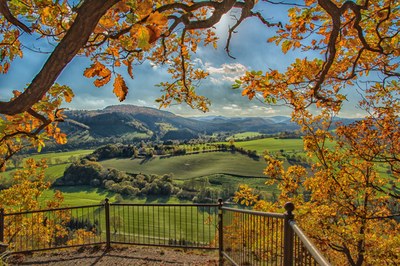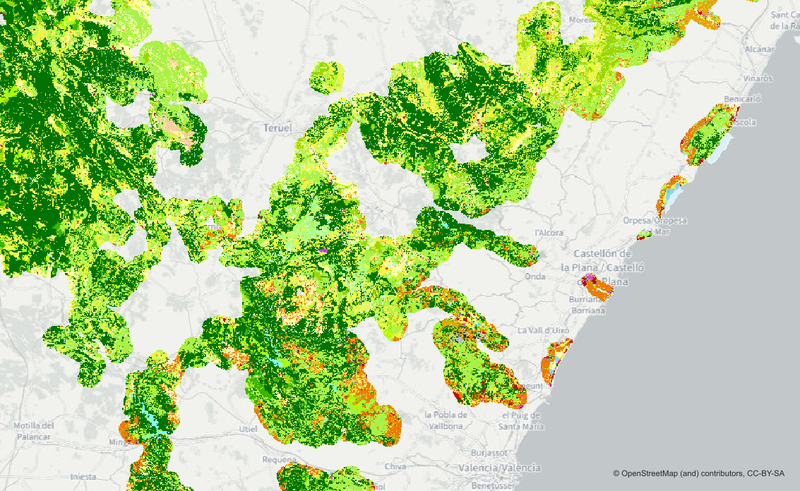All official European Union website addresses are in the europa.eu domain.
See all EU institutions and bodiesEurope has set ambitious policy goals to allow nature to recover and flourish. Creating protected areas, green and blue infrastructure, restoring ecosystems, rewilding and facilitating nature-based solutions to climate change can all contribute to reversing biodiversity loss in the EU.
Many vital species, habitats and ecosystems in Europe are threatened by urban sprawl, unsustainable farming and forestry, and pollution. Roads, railways, urban areas and agricultural land fragment Europe’s landscape, hindering the movement of species.
According to the EEA’s report State of Nature in the EU 2020, only 15% of Europe’s habitats and 27% protected species are in a good conservation status. We need an overhaul of our key systems, including agriculture and production, in order to halt and reverse the loss of biodiversity and ensure that nature continues to provide vital ecosystem services.
EU nature directives—such as the Birds and the Habitats Directives—offer protection to around 2000 species and habitats. At the heart of EU conservation efforts is the EU’s Natura 2000 network of protected areas, which currently makes up 18% of the EU’s land area and 10% of its marine territory.
Nature protection needs to be complemented by nature restoration efforts, through actions such as removing barriers on rivers and rewilding.To take nature protection and restoration one step further, the European Union has adopted in June 2024 the Nature Restoration Law, calling on Member States to develop national plans to restore at least 20% of EU land and sea by 2030 and all ecosystems that need restoration by 2050.
A healthy natural environment can also provide us solutions. Some of the impacts of climate change, such as heat islands and urban flooding, can be mitigated through nature-based solutions, including green spaces in cities.
The EU protects...
1380+
animal and plant species
230+
habitat types
460+
species of wild bird
Solutions for restoring Europe’s agricultural ecosystems
This EEA briefing presents evidence-based examples of key options available to farmers to help restore Europe’s ecosystems and enhance the ability of the agricultural sector to cope with increasing climate change impacts like droughts and floods as well as boosting productivity.
The study says introducing some key agricultural practices can prove to be a win-win for both farmers and local nature, delivering better resilience and restoring local ecosystems like grasslands, hedgerows or creeks.


Europe's habitats and species under pressure
Despite some positive results of conservation action in recent years, the latest assessments of habitats and species in Europe show worrying results.
- 15% of habitats have a good conservation status, with 81% having poor (45%) or bad (36%) conservation status at EU level.
- 9% of habitats that have an unfavourable conservation status show improving trends; however, 36% of these habitats show deteriorating trends.
- Forests are improving the most. Grasslands, dune habitats, bogs, mires and fens continue to trend downward.
- Over a quarter of species have a good conservation status, which is an increase of 4% compared with the previous reporting period (2007-2012). Reptiles and vascular plants have the highest proportion of good conservation status.
- While 6% of the species with an unfavourable conservation status are trending upward, 35% show are trending downward.
Natura 2000: Key to protecting Europe's nature
Placing some areas under some protection scheme is essential for nature conservation. The Natura 2000 network, designated under the Birds and the Habitats Directives, is the backbone of Europe's nature protection efforts, together with the Emerald network under the Bern Convention.
Explore all the Natura 2000 sites, both on land and at sea and find out the habitats and species protected at that site.


How can Copernicus help?
With the recent approval of the Nature Restoration Law—which aims to restore all ecosystems in need of restoration in Europe by 2050—the need for high quality, consistent, and freely available land monitoring data is higher than ever. The Copernicus Land Monitoring Service offers several datasets that promise to be instrumental in helping local, regional, and national organisations achieve this ambitious target.
The Natura 2000 (N2K) product offers a comprehensive overview of grassland-rich Natura 2000 sites protected under the European Union’s Habitats Directive. This product allows users to monitor the status of Natura 2000 sites, including how they are changing over time, which is essential for informing conservation decisions, creating policy, and increasing accountability for land managers. Other CLMS datasets have been used creatively in the context of ecology and wildlife conservation as well, such as the use of high resolution snow and ice data to assess the habitat preferences of snow finches in the Swiss alps.
What is Europe doing to protect nature and what is at stake?

How can we 'restore' nature?
Restoring nature can consist of a diverse set of approaches, including:
- Removing barriers on rivers — There are over one million barriers on European rivers, including dams, weirs and sluices. Most are small and obsolete, but they contribute significantly to the poor state of our rivers. These barriers prevent the downstream movement of sediment, causing blockages and altering habitats.
- Rewilding — Rewilding is a newer, more natural approach that involves restoring land to its natural and uncultivated state. By identifying spaces where biological processes are encouraged, nature has time to heal and start managing on its own again.
- Rethinking agricultural systems — Agricultural activities and other land management practices exert significant pressure on nature. The abandonment of grasslands has a tremendous impact on pollinators, farmland birds and semi-natural habitats.
- Transforming key systems — In addition to conservation and restoration measures, we need to fundamentally change how we produce and consume food and energy, develop and experience the cities we live in, and move people and goods around.
